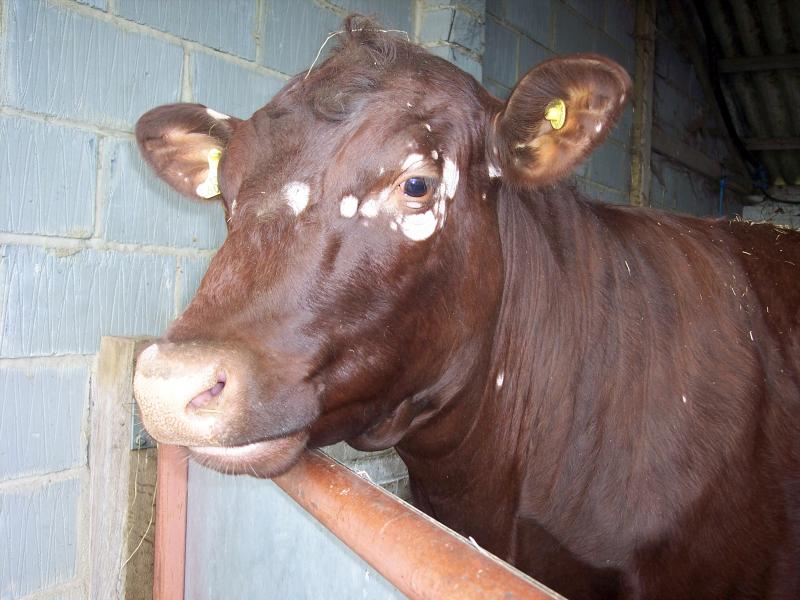Ringworm is a fungal infection of the hair and skin occurring in many different species including humans. These fungal infections typically look worse than they are and cause little, if any, permanent damage. However, show animals displaying active lesions are barred from shows and exhibitions due to the highly infections nature of the disease.
Presentation
In cattle, ringworm lesions typically occur on the head and neck, but in more severe cases can be found over the entire body. The spores of the fungus attack the hair shaft and surface layers of the skin causing fluid to ooze from the damaged skin. This fluid then mixes with debris from the skin and hair forming a raised, crusty white-gray colored scab. The infection spreads outwards from the center resulting in a circular scab measuring 1 – 1.5 inches in diameter. Lesions may overlap creating larger infected areas. Again, the lesions look worse than they are and actually cause the animal little discomfort.
Transmission
The fungus responsible for ringworm in cattle is Trichophyton verrucosum, which is a spore forming fungi. Spores are released from the broken hairs and scabs of the ringworm lesion and can live for years in a dry environment. This means that halters, grooming tools, and even the barn environment can remain infective for several years.
The fungal infection can be transmitted via direct contact with infected animals. This can easily happen when cattle are kept in confined spaces like barns. Show calves typically become infected from contaminated equipment that has not been properly sanitized between uses.
Treatment
Ringworm usually goes away on its own. Spontaneous recovery usually occurs in the spring and summer with increased exposure to sunlight. Topical treatments are available with varying levels of success. For topical treatments to be most effective the crusty scabs must first be removed by scraping or brushing as the medication will not penetrate these. Lesions should be treated at least twice, 3 – 5 days apart. A 2% solution of iodine or Whitfield’s ointment are options for topical treatment.
Some producers believe strongly in feeding higher levels of organic iodine to treat and prevent ringworm. While iodine does support skin integrity, the results of this treatment are inconclusive.
Prevention
With no available vaccine, the best method of prevention is cleanliness. Clean and disinfect barns with a strong solution of 1 part household bleach to 3 parts water. Halters and grooming tools can be disinfected using bleach as well.
Make sure to begin topical treatment immediately once a lesion is noticed. Try and reduce the stocking density of animals and limit direct contact. Increasing exposure to sunlight can also be helpful.

